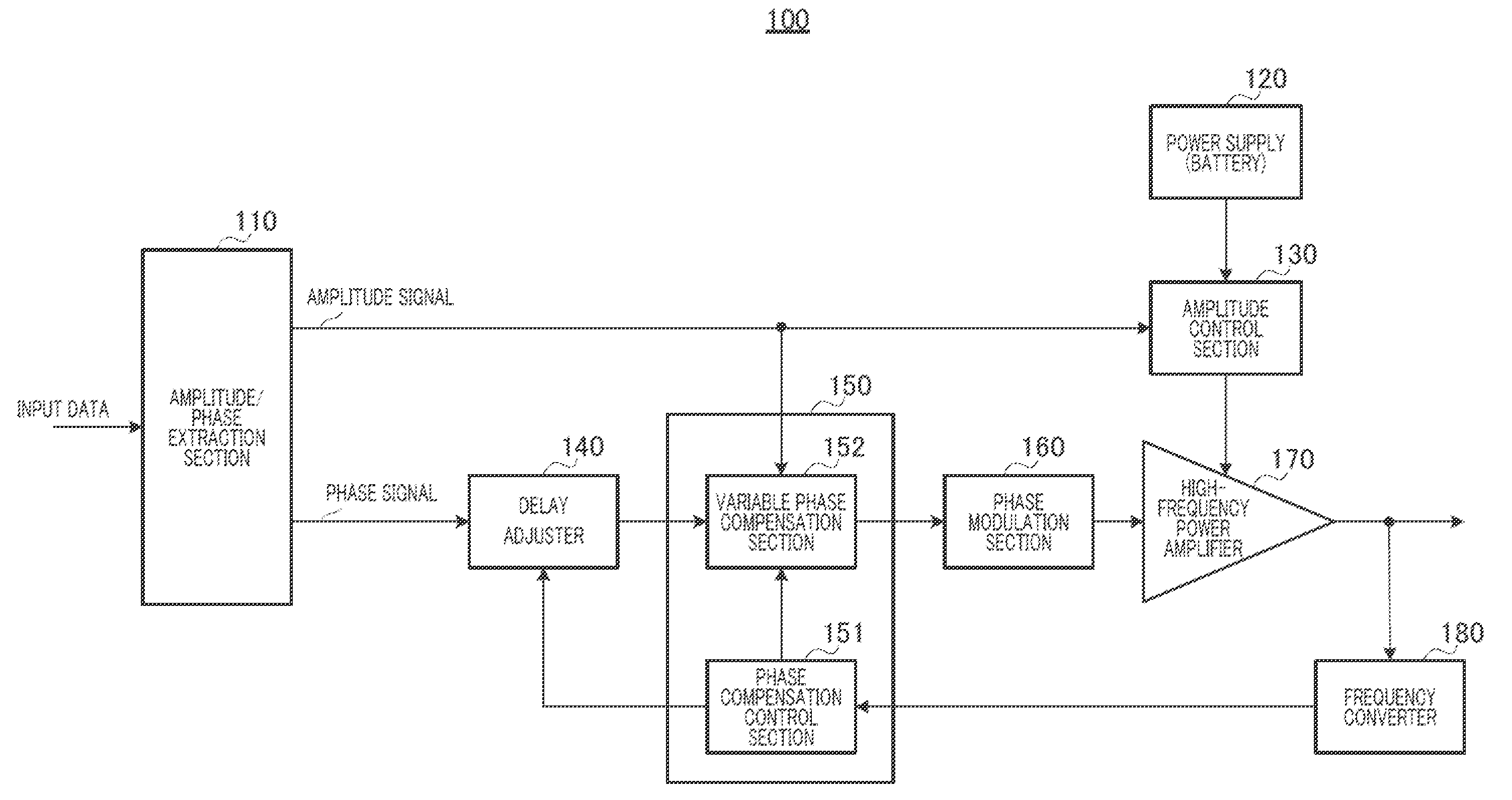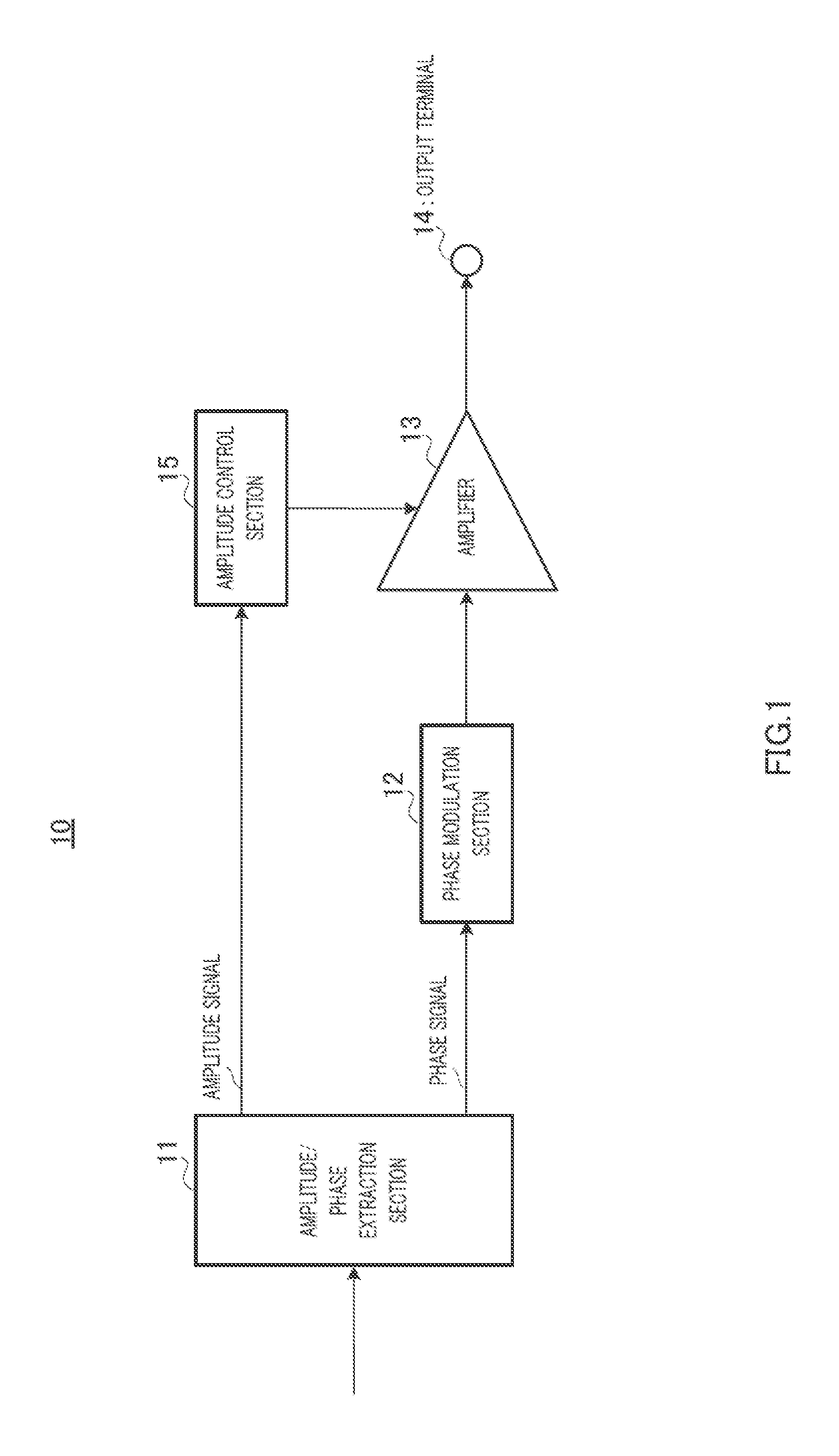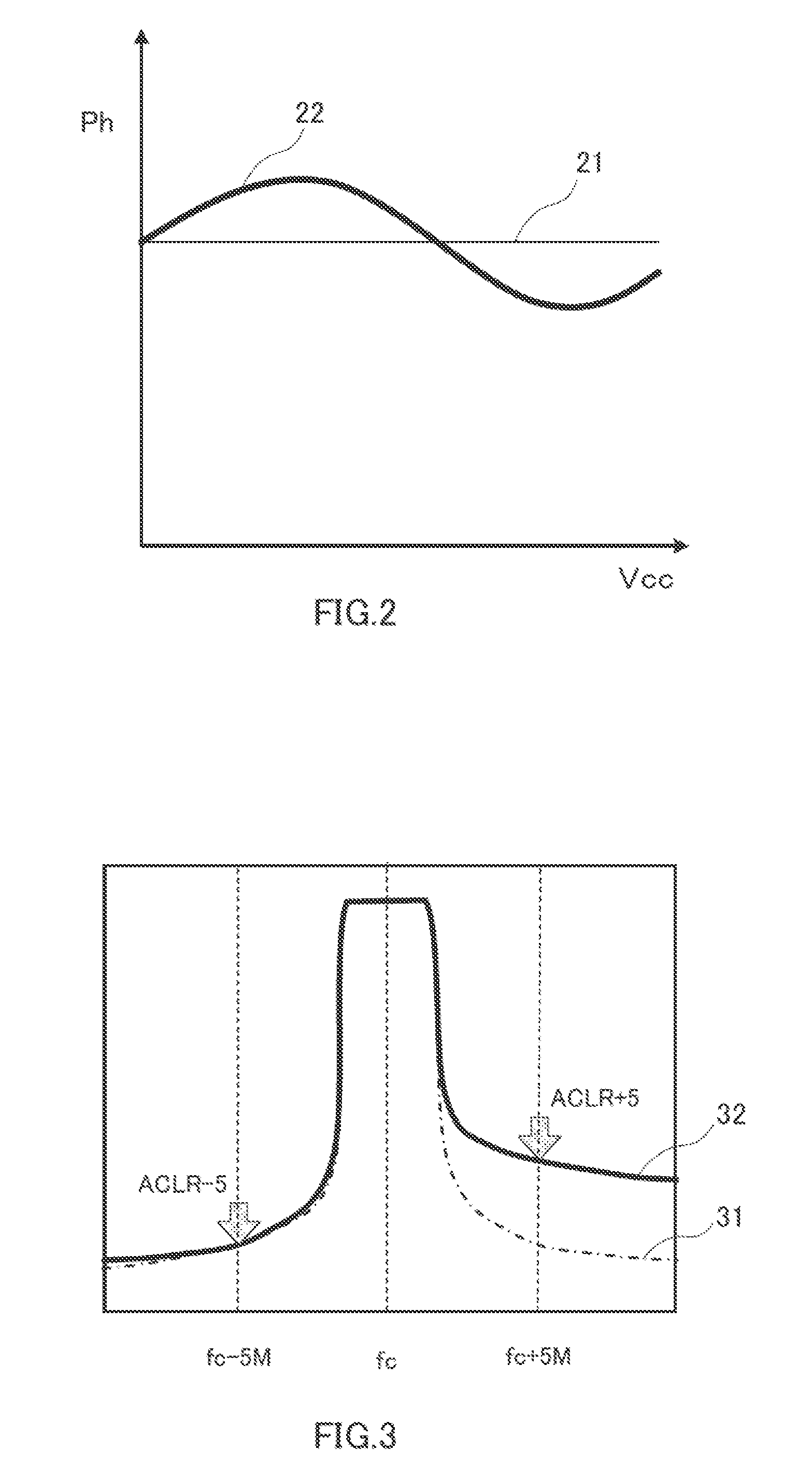Polar modulation transmission circuit and polar modulation transmission method
a transmission circuit and polar modulation technology, applied in the direction of amplifiers, amplitude to angle modulation conversion, electrical equipment, etc., can solve the problems of radio performance degradation such as aclr (adjacent channel lockage power ratio) in the transmitter, and achieve the effect of suppressing the degradation of signal quality
- Summary
- Abstract
- Description
- Claims
- Application Information
AI Technical Summary
Benefits of technology
Problems solved by technology
Method used
Image
Examples
embodiment 1
[0034]FIG. 4 illustrates a configuration of a main part of polar modulation transmission circuit (hereinafter simply referred to as a “transmission circuit”) 100 according to the present embodiment of the present invention.
[0035]Amplitude / phase extraction section 110 inputs modulation data (hereinafter referred to as input data) as data to be transmitted, and extracts an amplitude signal r(t) and a phase signal φ(t) from the input data. Amplitude / phase extraction section 110 outputs the amplitude signal r(t) to amplitude control section 130 and variable phase compensation section 152 of phase compensation section 150. Amplitude / phase extraction section 110 outputs the phase signal φ(t) to delay adjuster 140.
[0036]Power supply (battery) 120 supplies a power supply voltage to amplitude control section 130.
[0037]Amplitude control section 130 biases the power supply voltage, which is supplied from power supply (battery) 120, according to the input amplitude signal r(t) and outputs a vol...
embodiment 2
[0092]In the present embodiment, a polar modulation transmission circuit that sets the delay amount of delay adjuster 140 to an optimum value based on [1] the shape of the AM-PM in the compensation characteristic and [2] the change amount of the shape of the AM-PM in the compensation characteristic will be described.
[0093]FIG. 14 illustrates a configuration of a main part of a polar modulation transmission circuit (hereinafter simply referred to as a “transmission circuit”) according to the present embodiment of the present invention. In the transmission circuit of the present embodiment of FIG. 14, the component common to that of FIG. 4 is designated by the same numeral, and the description is omitted. Transmission circuit 200 of FIG. 14 differs from transmission circuit 100 of FIG. 4 in that transmission circuit 200 includes phase compensation section 210 instead of phase compensation section 150.
[0094]Phase compensation section 210 includes phase compensation control section 151,...
embodiment 3
[0105]Generally, when an ambient temperature is changed, a characteristic of the high-frequency power amplifier varies in consideration of an operating environment of the transmission circuit. For example, in the high-frequency power amplifier including an HBT (Heterojunction Bipolar Transistor), a relationship (AM-PM characteristic) between the power supply voltage supplied to the power supply voltage of the high-frequency power amplifier and the passage phase varies by the change of the temperature. That is, the passage phase varies by the temperature even if the same power supply voltage is supplied to the high-frequency power amplifier. Because the AM-PM characteristic of the high-frequency power amplifier is degraded by the variation in passage phase, for example, unfortunately a disturbing signal is generated to the adjacent frequency band to degrade the ACLR. Therefore, it is necessary to adaptively perform the temperature compensation according to the temperature change. In ...
PUM
 Login to View More
Login to View More Abstract
Description
Claims
Application Information
 Login to View More
Login to View More - R&D
- Intellectual Property
- Life Sciences
- Materials
- Tech Scout
- Unparalleled Data Quality
- Higher Quality Content
- 60% Fewer Hallucinations
Browse by: Latest US Patents, China's latest patents, Technical Efficacy Thesaurus, Application Domain, Technology Topic, Popular Technical Reports.
© 2025 PatSnap. All rights reserved.Legal|Privacy policy|Modern Slavery Act Transparency Statement|Sitemap|About US| Contact US: help@patsnap.com



